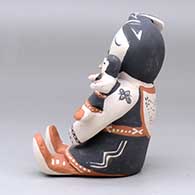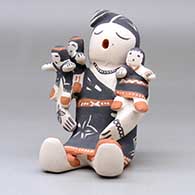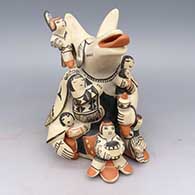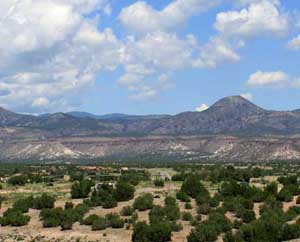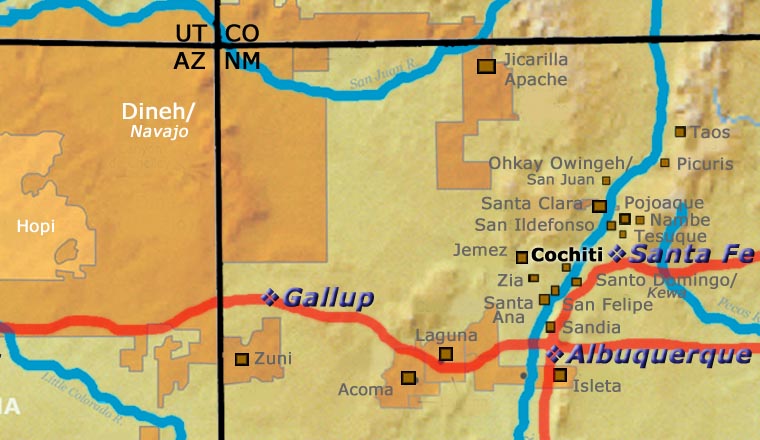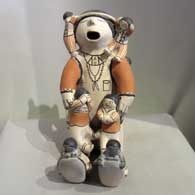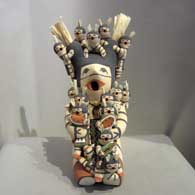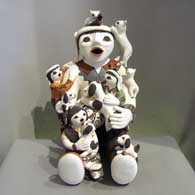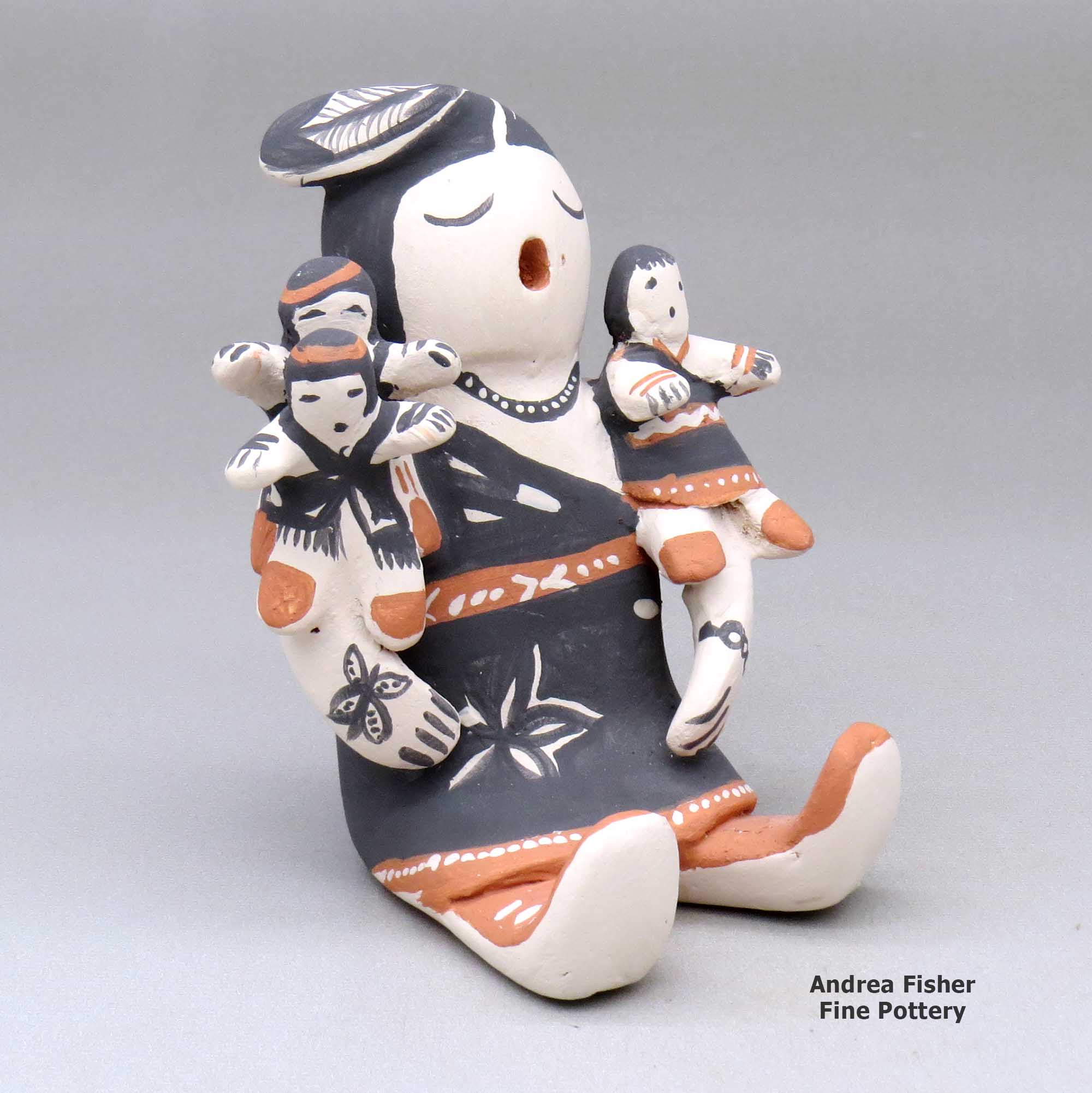
Snowflake Flower, Cochiti, A sitting grandmother storyteller figure with three children
Snowflake Flower
Cochiti
$ 325
dgco4g023
A sitting grandmother storyteller figure with three children
3.5 in L by 3.75 in W by 4.75 in H
Condition: Very Good
Signature: Snowflake Flower Cochiti NM
Cochiti
$ 325
dgco4g023
A sitting grandmother storyteller figure with three children
3.5 in L by 3.75 in W by 4.75 in H
Condition: Very Good
Signature: Snowflake Flower Cochiti NM
100 West San Francisco Street, Santa Fe, New Mexico 87501
(505) 986-1234 - www.andreafisherpottery.com - All Rights Reserved
(505) 986-1234 - www.andreafisherpottery.com - All Rights Reserved
Estefanita Arquero Herrera Family Tree
Disclaimer: This "family tree" is a best effort on our part to determine who the potters are in this family and arrange them in a generational order. The general information available is questionable so we have tried to show each of these diagrams to living members of each family to get their input and approval, too. This diagram is subject to change should we get better info.
- Estefanita Arquero Herrera (1889-pre-1965) & Juan Herrera
- Berena Cordero (1911-) & Elutero Cordero
- Snowflake Flower (Stephanie Rhoades, Estephanita Cordero) (1931-) & Cipriano Loretto (Jemez) - Snowflake Flower learned from her cousin, Mary Martin
- Phillip Loretto
- Mary Frances Loretto
- Patricia Ann Loretto
- Mary Mildred Loretto
- Jonathan Loretto
- Ada Suina (1930-) & Tony Suina
Tony's mother was Aurelia Suina (1911-)
- Caroline Grace Suina (1955-)
- Dena Suina (daughter-in-law)
- Maria Suina
- Marie Charlotte Suina (1954-)
- Patty Suina
- Regina Suina
- Snowflake Flower (Stephanie Rhoades, Estephanita Cordero) (1931-) & Cipriano Loretto (Jemez) - Snowflake Flower learned from her cousin, Mary Martin
- Felipa Trujillo (1909-1986) & Paul Trujillo (c. 1910-)
- Tonita Herrera
- Candelaria Herrera
- Santiago Herrera
Some of the above info is drawn from Southern Pueblo Pottery, 2000 Artist Biographies, by Gregory Schaaf, © 2002, Center for Indigenous Arts & Studies
Other info is derived from personal contacts with family members and through interminable searches of the Internet and cross-examination of the data found.


